Death of landscape architect who inspired planting of trees that bear his name on Barnet Hill
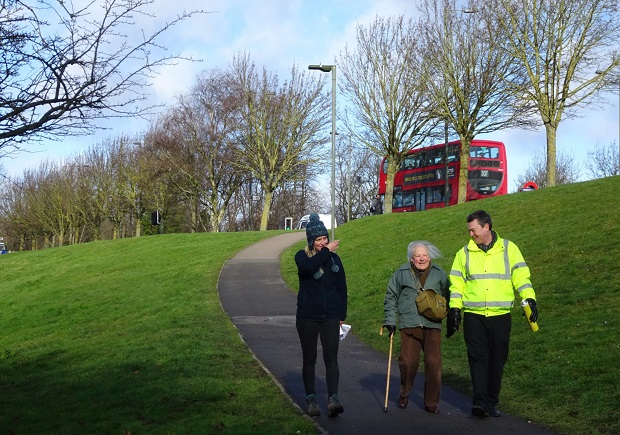
Barnet Society stalwart David Lee, who was renowned for his dogged determination to do all he could to enhance and preserve the character of Chipping Barnet, has died at the age of 93 leaving a unique and enduring legacy.
He was the inspiration behind the greening of Barnet Hill with the planting in 1999 of nearly 50 trees, mainly London planes and Norway maples, which in the last quarter century have transformed the appearance of the main approach to the town.
David, who enjoyed his status as the celebrated tree planter of High Barnet, conceived the idea of “a green chain” of trees all way the from railway bridge at Underhill, up the High Street and then on to Hadley Green.
Now known as “Lee’s Trees” the line of maples and planes that march up Barnet Hill spring into life each spring above a carpet of daffodils and crocuses and provide autumn colour.
It is a sight of which David – seen above with Barnet Council woodland officers – never tired, a constant reminder he said of his musings as an architectural student in the 1950s.
His lasting achievement is that the local community now enjoys perhaps the greenest surroundings of any comparable North London neighbourhood, an accomplishment of which he should be truly proud, says Robin Bishop, who leads for the Barnet Society on planning and the environment.
Robin’s tribute to David’s vision and drive is reproduced in full below.
David, who was a qualified architect and landscape architect, joined the society in 1995 and was soon elected to the committee, later becoming a vice president.
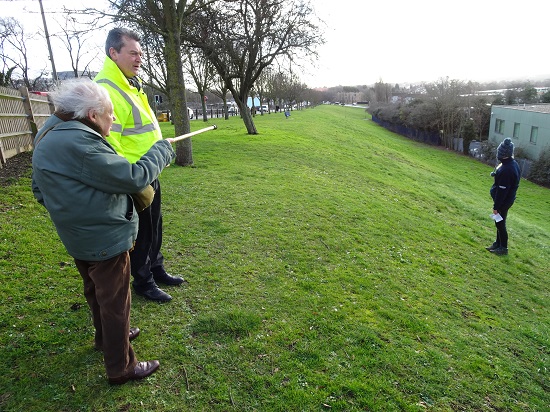
He was a young architectural student in 1956 when for the first time he proceeded down Barnet Hill from the tube station and was so disappointed to see such unwelcoming surroundings.
As he walked along the pavement beside this “long, sloping busy main road” all he could see was the tube line and an old railway goods yard on the left and to the right “a bleak, windswept bank that went on for ever without a tree in sight”.
Such was the impact of that first visit that it never left him and was still fresh in his mind when he eventually settled in High Barnet in 1982. Barnet Hill seemed just as exposed as he remembered it in the 1950s.
Forty years on from his initial thought that tree planting on Barnet Hill would improve the vista, the first saplings went in.
His first task on joining the Barnet Society was to advise on the location of two plantations of trees on the south-west side of Whitings Hill, tucked away between Quinta Drive and Mays Lane.
Barnet Council had created a new open space in what was formerly scruffy pastureland. Local groups were invited in 1995 to plant trees as part of the Watling Chase Community Forest Project.
Barnet Society joined in as a way of celebrating its 50th anniversary. David selected the trees, all native species such as oak, ash, silver birch, willows, blackthorn, and wild cherry.
Despite it being a foggy day for the ceremonial planting that December, David took delight in joining the guests, who included the society’s then president, the Chipping Barnet MP Sydney Chapman, and Mayor of Barnet Councillor Suzette Palmer, and he invited them to admire the two plantations from the top of Whitings Hill.
Three more oaks were planted in December 1999 in honour of the society’s founders, one of the many projects in Barnet to celebrate the millennium.
Spurred on by the completion of the plantations, David became ever more determined to tackle Barnet Hill.
As chairman of the society’s newly formed planning and environment committee, he was appointed their representative on the Chipping Barnet Town Centre Forum.
This gave him the chance to propose the Barnet Hill tree planting scheme which Barnet Council agreed to immediately in 1998 and commenced on site in January 1999.
In addition to the London planes and Norway maples planted on the grass bank between Underhill and the junction with Milton Avenue, other trees were chosen for sites across Underhill, on both sides of the High Street up to the parish church, and most recently as far as Hadley Green.
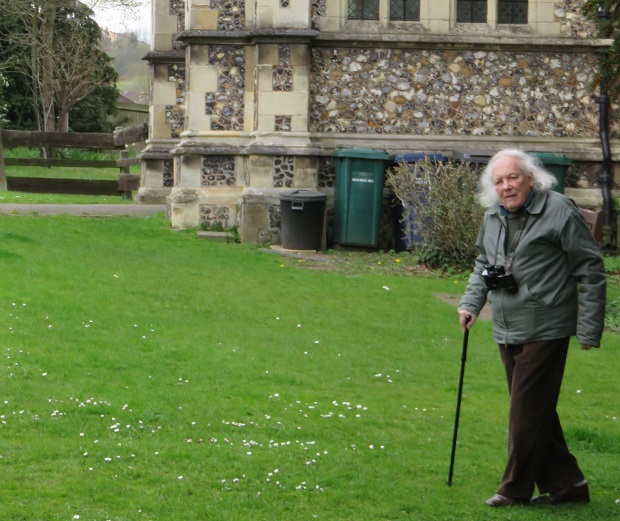
Robin Bishop writes:
I first encountered David in 2006, before I’d joined the Barnet Society. Barnet College was proposing to replace its premises next to Tudor Hall and opposite St John the Baptist’s Church. I was one of many locals who feared the worst. Someone said that the Barnet Society ought to be involved, so a meeting was arranged. A small man with a purposeful glint in his eye came in: it was David, and his views were clearly respected. As it happened, I agreed with much of what he said. We got the design of the College modified, and the resulting building and piazza has been a great success.
Some years later I was elected to his old role as Chair of the Society’s Planning & Environment Committee. David invited me for coffee and a tour d’horizon of local planning issues. We were both architects who cared about the environment, and we hit it off. He always had an opinion about building design, but he was also qualified in landscape architecture, and I valued his advice on that. Together, we got the Council to amend its Parks & Open Spaces Strategy, Green Infrastructure SPD and Tree Policy. We submitted critiques of various planning applications and saved the magnificent avenue of Lombardy Poplars lining St Albans Road from wholesale felling.
Five years ago, David told me Barnet Hill needed more trees. In his mind’s eye, the 50 superb Norway Maples he’d persuaded the Council to plant weren’t enough. He drew up plans for 100 more trees, and we met Barnet’s Woodlands Manager on site. After some debate a masterplan was agreed, and in 2019 the Council planted the first 20 trees. Over the next three years, during Covid, I organised volunteers to plant over three hundred Hawthorns that David also wanted, though he was too infirm to take part.
When I phoned him on New Year’s Day, he was keen to get the last trees planted. Coincidentally, a few days later the Council offered to plant them. I left a phone message telling David the good news – but he never replied. I hope he was already checking out the gardens in paradise.
David’s passion ruffled some feathers, but Barnet residents and visitors should be grateful that for nearly three decades he campaigned for a better environment for us all.
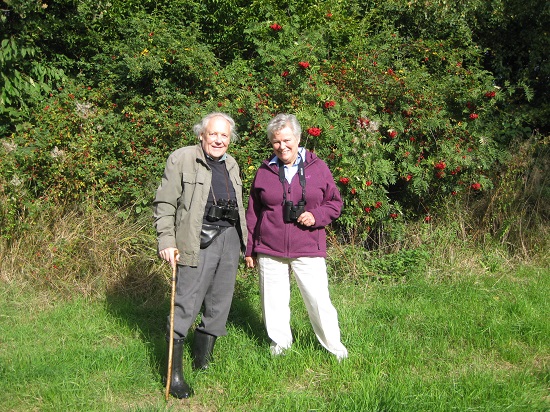
Jenny Remfry, a Vice-president of the Barnet Society (see above, with David, at Whitings Hill) added her tribute: As Chairman of the Barnet Society from 1990 to 2000, I was present at the first meeting attended by David Lee in 1994.
We were discussing how to celebrate the 50th anniversary of the society the following year. One idea was a Beating of the Bounds of the ancient parish of Chipping Barnet. This was a great success.
Another was to plant trees as part of Barnet Council’s project to contribute to the newly-designated Watling Chase. David offered to be involved with that, and the result was the plantation at Whitings Hill.
With some reluctance he joined the Barnet Society committee. He was not a natural team player, and his strong opinions were not always appreciated, but his expertise as a landscape architect was undeniable and he achieved a great deal. “Lee’s Trees” on Barnet Hill will ensure that he will not be forgotten.
David was divorced with no children but was close to his brother. They co-owned a narrow boat, and spent many days exploring the British canal network. David was also a proud allotment owner, in frequent disputes with owners of neighbouring plots.
Over the years he and I become good friends and I remember him with affection and gratitude. It was he who proposed that I be elected a Vice-president of the Barnet Society on my retirement from the committee.
Diana Killip, daughter of Peter Willcocks, another Barnet Society stalwart and conservationist, gave this tribute on Facebook. I am sad to hear this. I think of David every time I see those trees on Barnet Hill.
I met him several times over the years and I like to think that he and my dad Peter Willcocks, are continuing their friendly sparring when they find themselves, hopefully, admiring trees in paradise!
1 thought on “Death of landscape architect who inspired planting of trees that bear his name on Barnet Hill”
Comments are closed.

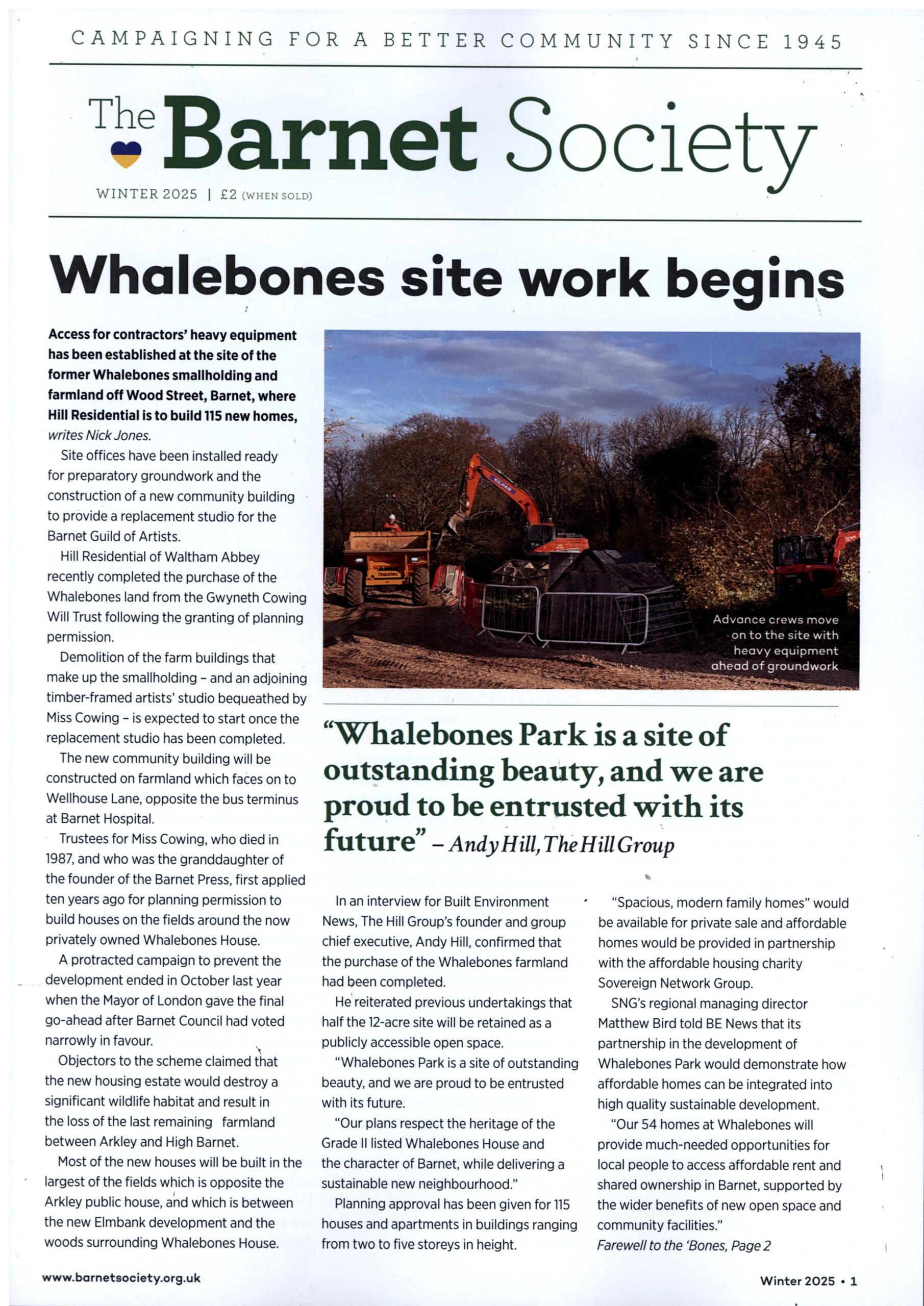
As well as being a Welcoming entrance to Barnet, the Trees provide some unseen stability to the hill and it’s embankment. this is where good architectural design matters. Well Done David.